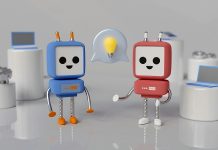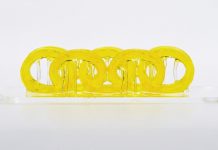
Creativity is a complex, multi-faceted concept encompassing a variety of related aspects, abilities, properties and behaviors.
In a recent study, scientists use a computational linguistic approach to identify 14 key components of creativity. The finding is newly published in PLOS One.
Researchers from University of Kent in the UK, University of Sussex in the UK conducted the study. They used a unique approach to develop a suitable model of how creative behavior emerges that is based on the words people use to describe the concept.
Using techniques from the field of statistical natural language processing, researchers identified a collection of 14 key components of creativity through an analysis of a set of academic papers on the topic.
Words are identified which appear significantly often in connection with discussions of the concept. Researchers used a measure of lexical similarity to help cluster these words.
A number of distinct themes emerged, which collectively contribute to a comprehensive and multi-perspective model of creativity.
These components include:
- Active Involvement and Persistence
Being actively involved; reacting to and having a deliberate effect on the creative process.
The tenacity to persist with the creative process throughout, even during problematic points.
- Dealing with Uncertainty
Coping with incomplete, missing, inconsistent, contradictory, ambiguous, and/or uncertain information. Element of risk and chance—no guarantee that information problems will be resolved.
Not relying on every step of the process to be specified in detail; perhaps even avoiding routine or pre-existing methods and solutions.
- Domain Competence
Domain-specific intelligence, knowledge, talent, skills, experience, and expertise.
Knowing a domain well enough to be equipped to recognize gaps, needs, or problems that need solving and to generate, validate, develop, and promote new ideas in that domain.
- General Intellectual Ability
General intelligence and IQ. Good mental capacity.
- Generation of Results
Working towards some end target, goal, or result.
Producing something (tangible or intangible) that previously did not exist.
- Independence and Freedom
Working independently with autonomy over actions and decisions.
Freedom to work without being bound to pre-existing solutions, processes, or biases; perhaps challenging cultural or domain norms.
- Intention and Emotional Involvement
Personal and emotional investment, immersion, self-expression, and involvement in the creative process.
The intention and desire to be creative: creativity is its own reward, a positive process giving fulfilment and enjoyment.
- Originality
Novelty and originality; a new product, or doing something in a new way; seeing new links and relations between previously unassociated concepts.
Results that are unpredictable, unexpected, surprising, unusual and out of the ordinary.
- Progression and Development
Movement, advancement, evolution and development during a process.
Whilst progress may or may not be linear, and an actual end goal may be only loosely specified (if at all), the entire process should represent some progress in a particular domain or task.
- Social Interaction and Communication
Communicating and promoting work to others in a persuasive and positive manner.
Mutual influence, feedback, sharing and collaboration between society and individual.
- Spontaneity/Subconscious Processing
No need to be in control of the whole process; thoughts and activities may inform the process subconsciously without being inaccessible for conscious analysis, or may receive less attention than others.
Being able to react quickly and spontaneously when appropriate, without needing to spend too much time thinking about the options.
- Thinking and Evaluation
Consciously evaluating several options to recognize potential value in each and identify the best option, using reasoning and good judgment.
Proactively selecting a decided choice from possible options, without allowing the process to stagnate under indecision.
- Value
Making a useful contribution that is valued by others and recognized as an achievement and influential advancement; perceived as special, ‘not just something anybody would have done’.
The end product is relevant and appropriate to the domain being worked in.
- Variety, Divergence as well as Experimentation
Generating a variety of different ideas to compare and choose from, with the flexibility to be open to several perspectives and to experiment and try different options out without bias.
Multi-tasking during the creative process.
Researchers suggest that the 14 components provide ontology of creativity: a set of building blocks that can be used to model creative practice in a variety of domains.
In addition, they tested the components in two case studies to evaluate the creativity of computational systems. They found that these components were useful and can contribute to further research in the area.
Citation: Jordanous A, Keller B. Modelling Creativity: Identifying Key Components through a Corpus-Based Approach. PLOS ONE, 11: e0162959. DOI: 10.1371/journal.pone.0162959.
Figure legend: This Knowridge.com image is for illustrative purposes only.



